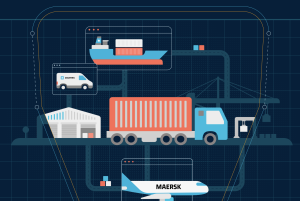
“Given the disruption of the global economy, it’s become a suppliers’ market – and they’re not happy,” says Gary Wollenhaupt, a veteran B2B technology content marketing writer, specialising in supply chain & logistics, based in Phoenix, Arizona. He tells SmartProcurement what this means for procurement and supplier relationship management.
Suppliers are using their new leverage to push back against policies and strategies that have been forced upon them, such as extended payment terms, annual pricing reductions, and lack of visibility and gain-sharing.
Procurement professionals must become aware of the disconnects between buyers and sellers that lead to ineffective relationships. As the balance of power shifts to the suppliers’ favour, there is dissatisfaction among B2B buyers. In a recent Accenture survey, 80% of frequent buyers reported they switched suppliers at least once in a 24-month period.
If you feel the environment has changed in the past two years or so, you’re not wrong.
A Shifting Balance of Power
The balance of power has shifted in at least two of the five forces from Michael Porters’ foundational 1998 book ‘Competitive Strategy’.
Buyer Power was often predominant in the past, with fewer buyers and the low cost of switching giving purchasers the upper hand.
Recently, Supplier Power has strengthened, as suppliers of in-demand products and commodities have more power to set terms of the deal.
Purchasers of everything from microchips, to sand, to coffee, have seen acquisition and shipping costs rise, and suppliers face disruptions in their own supply chains and labour forces. That means Supplier Power is higher than Buyer Power for now.
In Peter Kraljic’s notable Kraljic Matrix, one of the four quadrants is leverage. For items that fall into this category, the buyer tends to have the power due to the commodity nature of the products. Theoretically, new suppliers with lower prices are easy to find. Many suppliers felt they were in this category instead of being seen as strategic partners.
In introducing his matrix in 1983, Peter Kraljic wrote:
“Ignoring or accepting countless economic and political disruptions to their supply of materials, companies continue to negotiate annually with their established networks of suppliers or sources. But many purchasing managers’ skills and outlooks were formed 20 years ago in an era of relative stability, and they haven’t changed. Now, however, no company can allow purchasing to lag behind other departments in acknowledging and adjusting to worldwide environmental and economic changes. Such an attitude is not only obsolete but also costly.”
His words ring as true today as they did then. Perhaps the only things that have changed are the increasing pace and global nature of the disruptions.
Suppliers Fighting Back
For years, buyers have made full use of their leverage over suppliers, extorting one-sided terms and conditions. Extended payment terms have turned suppliers into financiers, often for companies many times their size. A supplier may extend payment terms to a long-term customer during trying times, but having your cash flow held hostage by a multibillion-dollar global company doesn’t feel very collaborative.
Price reductions are another area ripe for pushback. Procurement buyers implement their company’s financial goals through annual price reduction goals, along with ad hoc pricing pressure throughout the year. Suppliers should be incentivised to be more cost-effective in their own operations. But some companies may make capital investments or fund research & development and expect to recoup through consistent margins on the business.
Often, the buyer doesn’t lower their prices or internal costs. They’re boosting their bottom line at the expense of their suppliers. At some point, it becomes an unsustainable relationship.
When business is good, buyers still expect price reductions. When business is down, they go to their suppliers asking for relief.
Expect suppliers to use their leverage. They may reject extended payment terms or deny discounts for fast payments. They may want a return to 30-day payment terms, with strict limits on extending credit or lengthy payment cycles.
As buyers worked to increase their supplier base, suppliers took the same approach to diversify their client list.
For buyers and sellers of commodity-type items, it’s easier to replace or add sources. Globally, construction firms are reeling from rising materials and mechanical equipment costs. Black and Decker sought out new sources of lithium to make batteries for electric power tools and added suppliers and capacity for electrical components.
Looking ahead, experts predict semiconductors will still be in short supply, as well as commodities like aluminium, plastics and building supplies. Buyers search for alternative suppliers, but the process takes time to select a new vendor or wait for existing suppliers to add capacity. Strategic sourcing and supply chain management will play a huge part in navigating the future.
It’s a new world for everyone to adjust to, when supplier relationship management will be key. But when it comes to procurement, there are many organisations now looking over their shoulders nervously at their supply base and wondering what is coming back towards them. The hope for many may be that suppliers are more willing to collaborate and play nicely while the boot is on the other foot.
Article first published by www.procurious.com
We would love to hear our readers’ thoughts on this issue. Feel free to give your views in the comments, in answer to the following question:
Public procurement in South Africa has seen a lot of upheavals. The legislative environment is volatile, especially around BBBEE and the recent ruling on the PPFMA. What will it take to achieve world-class procurement in the public sector?


























